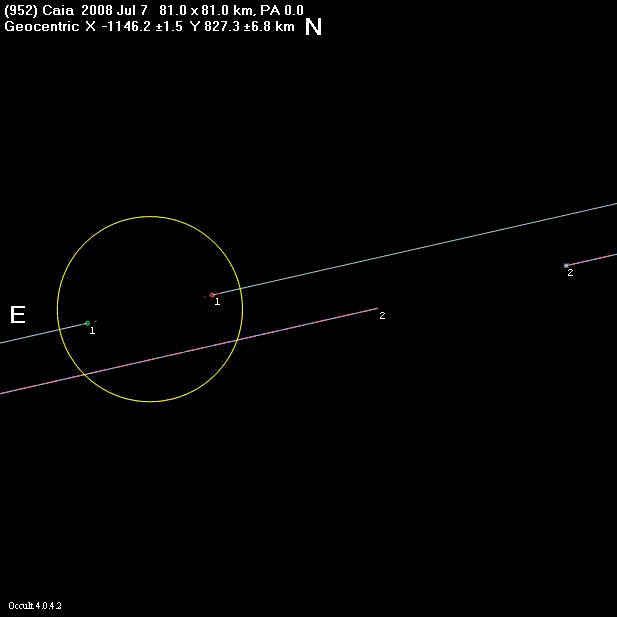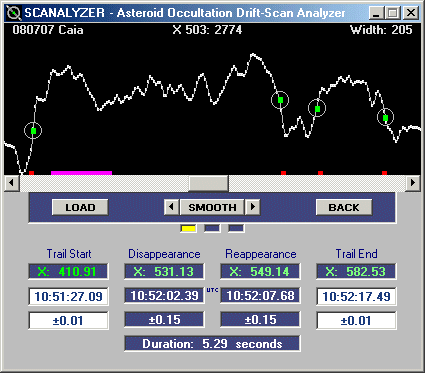|
|
A 5.3 second occultation was recorded by John Broughton, using CCD drift scan technique.
View the updated prediction.
Observers: 1 J Broughton,Reedy Creek, QLD 4227, AU 2(P) Prediction 2 July

Discussion:
The circle above is plotted at the expected 81 km diameter of Caia. With only one chord it is not possible to determine whether John was north or south of the central line of the event. However the predicted and observed data suggest that the predicted path may have been very close to correct but the predicted time was about 13.5 seconds early.
The figures below show the drift-scan image of the occultation together and the data as analysed by John's Scanalyser software.


Observational Data:
Observation details for MP (952 ) Caia By Star UCAC2 16432689 On 2008-07-07 at 10:51:52.0 _______________________________ Observer John Broughton Location Reedy Creek, QLD, AU Longitude +153:23:52.8 Latitude -28:06:30.3 Altitude 66 m Datum WGS84 Telescope Newtonian Aperture 51 cm Seeing Slight flickering Thin cloud < 2 Timing Tape Recorder + time signal + shutter Drift scan Disappearance 10:52:02.40 Reappearance 10:52:07.70 Comments: A positive drift-scan observation where preparation paid dividends. A positive drift-scan observation where preparation paid dividends. For peace of mind whenever a clear sky is not guaranteed, I prefer to align the telescope on a previous night. As it was located in a crowded field, I also imaged the target star, finding its magnitude to be 12.7 and opted to limit the drift-scan exposure to 50s in avoidance of a left-end trail overlap. The day of the event was raining at times and overcast 95% of the time. Indeed it was overcast at 10:20 UT when I started cooling the CCD camera. However by 10:40, low-level cloud had begun to break up and the observation itself occurred inside the edge of clouds where they were not opaque. Luckily the transparency sufficed to allow a clearly positive result to be recorded. As the trail is fainter in the last 15 seconds where the event is located, I increased the uncertainty from the Scanalyzer result and rounded the D and R times to the nearest tenth. The duration comes out at 5.3s.